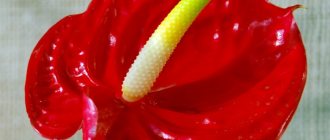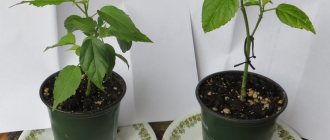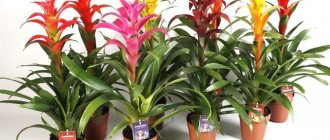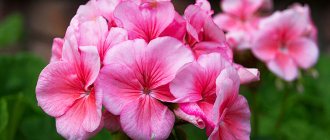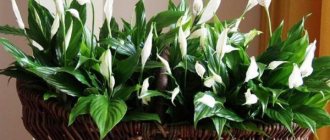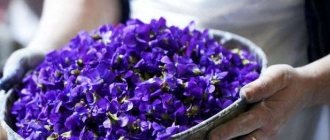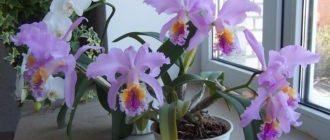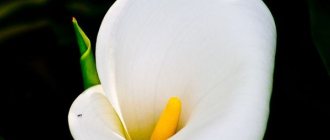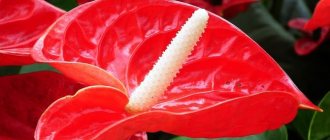05/28/201905/28/2019 Irina Malinina 0 comments
Most indoor crops prefer to bloom in the warm season, but if you are tired of the autumn grayness and winter frosts, then pay attention to the indoor cyclamen flower, the flowering time of which begins in November and ends in April. Caring for it is not easy, but this plant is worth your efforts and will definitely delight you with its abundant lush flowers.
Today you will learn about how to care for cyclamen at home, all the subtleties and nuances of cultivation and breeding.
Cyclamen flower - botanical description
Photo: https://pixabay.com/photos/cyclamen-flower-rosa-garden-winter-1696692/
The cyclamen flower, Drakva or Alpine violet, belongs to the Primrose and Myrsingaceae families. The homeland of cyclamen is the hot countries of the Mediterranean, Asia Minor, North-East Africa, the Krasnodar Territory and part of the Caucasus. This natural area has hot summers and fairly cool winters, and cyclamens love the cold, winter well under the snow, and then “peck” through it and bloom in bright islands.
Alpine violet blooms in autumn, when the air temperature drops below 15 ° C, and delights with its flowers until April. Prefers well-drained soil, but thrives on Alpine rock. As temperatures rise to summer temperatures, the leaves die off and cyclamens go dormant until the fall cools.
The root system is tubers, round-shaped modified roots that can accumulate a supply of nutrients. In cyclamens, the tuber is hard, fleshy, and can reach fifteen centimeters in diameter.
The leaves are petiolate and begin to grow immediately from the ground, that is, the plant does not have a main stem. The surface is leathery, the shape is heart-shaped. Their coloring is quite bizarre and variegated. They can be different shades of green with a silver pattern on the outer surface. Leaf diameter is up to 14 cm. The petioles are short, red-brown in color.
The flowers are very bright, appearing at the ends of fairly long (up to 20 cm) bare peduncles. They are shaped like a butterfly. They have five pointed petals growing backwards, that is, bent back. They can be either simple or terry. The length of one petal does not exceed five centimeters. The floral range is all shades of white, pink, red and purple.
The lifespan of one flower is no more than ten days, but during the entire flowering period, only one cyclamen bush can boast of producing from fifty to seventy flowers. Due to the fact that the buds replace each other, the alpine violet blooms continuously for several months in a row. And what is most valuable is the winter months, when we simply physically demand bright gifts from nature.
After flowering ends, the fruit-box ripens, containing many small seeds.
Energy of flowers according to Feng Shui
For the correct placement of cyclamen according to Feng Shui, it is necessary to take into account the energetic properties of these flowers:
- the plant has a cold aura and belongs to the elements of water and earth. The flower is protected by the zodiac sign Taurus, which in turn obeys the rhythms of the planet Venus. For this reason, cyclamen petals are most often bright, giving an attractive appearance;
- Cosmic bodies that give unusual properties to the plant include the Moon, Mercury and the Sun. These objects, due to their location, feed flowers with cosmic power, which in turn have a positive effect on a person, allowing him to self-organize, cultivate feelings and stabilize the nervous system;
- rat and monkey are symbols of the eastern calendar that correspond to this bright plant;
- The type of character of a person for whom cyclamen is ideally suited is sanguine.
Popular types and varieties
Photo: https://pixabay.com/photos/cyclamen-flower-plant-blossom-3818741/
Currently, botanists count two dozen species of alpine violet.
Conventionally, they can be divided into three groups:
- standard – the height of the bush reaches 30 cm;
- medium-sized - about 20 cm;
- dwarf - maximum height of peduncles - 15 cm.
Let's look at some of them.
Persian
Thanks to its large flowers, gardeners prefer to grow this species as a houseplant. Based on the Persian cyclamen, many ornamental varieties with various colors of leaves and flowers were bred.
It has large round-flat tubers. Very meaty and quite firm. The heart-shaped leaves are dark green, “painted” with a beautiful silver pattern, and reach fifteen centimeters in length.
Peduncles are tall, red-brown. Together with the blossoming flower, the height of the plant is about thirty centimeters. The palette of shades is very diverse, from white and pink to red and purple.
It blooms very luxuriantly and so beautifully that breeders still use Persian cyclamen to obtain new hybrid varieties.
European
Another popular species that is often grown at home. But its flowers are much smaller. It's like comparing lush Persian lilacs with ordinary ones.
European cyclamen has tiny leaves - only three to four centimeters in length. On top they are light green in color, and on the “wrong” side they are purple. The flower petals are short, two centimeters, while those of the Persian cyclamen are twice as large.
The main feature is the “wrong” flowering period. It begins in early May and ends in September, that is, the plant is more summer than winter. There is no dormant period as such, the leaves do not die and grow all year round. Caring for cyclamen at home is much easier; it does not require strict temperature conditions, the main thing is not to allow the temperature to exceed 25 ° C and provide diffused light.
But despite such tempting conditions, this type of alpine violet is not very popular due to its inconspicuousness and small flowers.
Cretan
Already from the name it is clear that this type of cyclamen grows exclusively in Crete. The dimensions of the flower are very small, barely reaching fifteen centimeters. Blooms with white and pale pink flowers.
The leaves are very distinctive - heart-shaped with jagged edges. On a green background there is an olive pattern and a scattering of spots.
Prefers a humid environment and does not like direct sunlight.
Kossky
Habitat: Syria, Turkey, Mediterranean, Caucasus, Krasnodar region. It grows on poor rocky soils, so it barely reaches ten centimeters in height. Winters well under snow cover.
Flowering begins in late winter and early spring, when the snow melts. The flowers are tiny, dark purple at the base, gradually turning into a lighter shade, the tips of the petals are white or slightly pinkish.
The leaves are round in shape, variegated above with a light pattern, and burgundy-purple below.
This species is listed in the Red Book of Russia and is very rare in our country.
Ivy, or Neapolitan
Its main difference from other species is that pedicels with white-pink bright flowers appear first, and only then leaves grow. It is grown both in open ground and as a house plant. It is characterized by incredible frost resistance, withstands temperatures down to -28 ° C.
The leaves resemble ivy. They can be of different colors - from rich green to bright with a silver pattern.
Flowering begins in early autumn. The corollas are small, the petals are from 1.5 to 3 cm. The color is pale pink, but with a clearly defined purple V-shaped spot at the base of the petal. Decorative varieties also have a white color.
Growing and care at home
Photo: https://pixabay.com/photos/flowers-flower-red-garden-flower-283428/
Cyclamen loves cool, fresh air, which is quite difficult to provide in an apartment. It is this condition that is considered the most difficult to achieve, especially in the presence of central heating, which we cannot influence. Otherwise, the plant is very unpretentious. Let's take a closer look at how to care for cyclamen and what requirements it places on its owners.
Temperature
The most favorable temperature regime for a winter-flowering plant is 14-16 °C. It is especially important to observe it during the flowering period. To do this, cyclamen is protected as much as possible from heating sources with a protective screen, placed on a cool windowsill or taken out onto a glassed-in loggia.
The maximum temperature is +25 ° C with high air humidity, but in this case the flower may not bloom, but shed its leaves and go into hibernation.
In order for the plant to bloom magnificently, it is recommended to harden it by artificially lowering the temperature, spraying and frequent ventilation. Cold and dew only strengthen the leaves and root system.
If you turn the flower upside down and place it on the leaves, they should not bend. If the petioles cannot stand it, then the plant is not strong and hardened enough.
During flowering, the room temperature should be maintained no higher than +15 °C and fresh air should be provided as often as possible by ventilation.
Lighting and humidity
The cyclamen flower is very light-loving, but does not tolerate aggressive sunlight directed directly at it. The ideal place for the plant is a cool window sill facing east or west. When the sun rises and sets, the rays fall obliquely and do not harm the delicate leaves. And in the midday heat you can protect the flower with shading.
In winter, when daylight hours become short, cyclamen can be moved to a southwest or southeast window.
Alpine violet should be sprayed as often as possible, especially if the air temperature exceeds 17-18 °C. But at the same time, you must try to prevent droplets of water from falling on the delicate petals of the flowers. Humidify the air around the pot with a fine spray bottle, or better yet, place the pot in a container with wet expanded clay. The water will evaporate and create a cushion of water around the plant, creating the necessary moisture. Just make sure that the bottom of the pot does not come into contact with water, otherwise the tuber will begin to rot.
Watering
Photo: https://www.pexels.com/photo/watering-plants-with-a-watering-can-6442/
How to water cyclamen so that it has enough moisture, but at the same time does not rot? Regardless of the age of the plant, whether it is very young or already mature, watering is carried out according to the following scheme. In summer, the soil is moistened with settled water at room temperature no more than twice a month, since the tuber is at rest, and in winter, especially during the flowering period, as the top layer of soil dries.
Try to prevent water from getting into the rosette of leaves; it should be directed from the tuber to the edges of the pot. Remember, cyclamen cannot tolerate dampness; excessive moisture can cause rotting of the roots.
The flowering plant is moistened using the method of bottom watering - water is poured into a pan and the remainder is drained after half an hour. If the pot is clay, then it can be dipped in water up to the neck for about fifteen to twenty minutes. Through the porous structure of the clay, water will well moisten the soil throughout its entire volume.
Top dressing
It is necessary to fertilize the cyclamen flower from the appearance of the first leaves to the withering of the leaves, that is, during the period of bud formation and flowering. Any liquid mineral fertilizer intended for beautifully flowering domestic crops is suitable for feeding.
Fertilizing is applied twice a month some time after watering. During the dormant period, the tubers do not need feeding.
Soil and replanting
The soil for cyclamen should be well-drained and loose. Alpine violet prefers slightly acidic or neutral soil. To do this, take equal quantities of turf and deciduous soil, peat and coarse sand. But a self-prepared mixture may turn out to be of poor quality and infested with pests, so it is recommended to buy a ready-made substrate for tulips or universal soil at a flower shop.
Now let's look at how to transplant cyclamen. This is done in the fall, after a period of dormancy, when the first leaves have already appeared. In order not to damage the root system, it is best to use the transshipment method, when the roots are not completely freed from the old substrate.
Get a new pot. It should be several centimeters larger in volume than the previous one. They are guided by the width of the root system and add two centimeters so that there is room for the development of roots. A larger pot is not suitable - the alpine violet will not bloom until it has mastered the entire underground part of its territory with its roots.
Make sure the pot has a drainage hole, add a layer of large pebbles or expanded clay and cover it with fresh substrate. Now carefully remove the cyclamen from the old pot and carefully examine the roots. If they are healthy, then the earthen ball is carefully lowered into a new container, and the voids are filled with soil.
If you find that the roots are rotten, then they are removed and the cut is treated with crushed activated carbon or ash. In this case, the earthen lump will almost certainly be cleared of old earth. The plant is planted completely in the updated substrate, but it will need much more time to adapt.
A recently purchased plant in a store also requires replanting; in this case, more peat must be added to the soil to ensure enhanced root growth.
Young cyclamens up to the age of five require annual replanting, and more mature ones - once every two to three years.
All types of cyclamen, except the European one, are planted in such a way that the tuber rises two-thirds above the surface. The European one can be sprinkled with earth, but it should not be buried deep.
Trimming
Dried leaves and faded flowers must be removed. Firstly, it improves the appearance of the plant, and secondly, this procedure increases the flowering period and promotes the formation of new buds, since cyclamen does not waste energy and nutrition on supporting fading “body parts”.
Just do not pick or cut off the leaves and flower stalks under any circumstances. They need to be “unscrewed”. This way the tuber itself is not injured. If a “wound” does form, it is sprinkled with wood ash or activated carbon.
Care during the rest period
As you already understand, the cyclamen flower prefers cool weather. It blooms in late autumn and, under favorable conditions, can bloom throughout the winter and part of spring. As soon as the temperature rises to 25 ° C, the plant goes into hibernation. At the same time, the leaves dry out and die.
It is advisable to move the pot with the tuber to a cool, dark place - a basement or cellar, and in apartment conditions, many gardeners place it under the bathtub. But watering, even at rest, is necessary, although it is very meager, in small portions and no more than once or twice a month. Any additional feeding at this time is completely excluded.
Reproduction methods
Photo: https://pixabay.com/photos/cyclamen-flower-pink-nature-flora-233543/
There are two ways to get new plants - tubers and seeds. The first one is used exclusively at home, it is simple and does not require much effort. The second is mainly used for scientific and commercial purposes. Breeders develop new varieties in this way, and flower farmers grow cyclamens in large quantities for sale. This method is quite labor intensive.
Tubers
During the dormant period, dig the tuber out of the pot and cut it into several pieces. You can get as many of them as there are growth points.
The sections are slightly dried in fresh air, and then treated with a growth stimulator and disinfected with activated carbon or ash. Unfortunately, this does not always help, and the tuber may rot due to a fungal infection, to which cyclamen are very prone.
The tuber pieces are each placed in its own pot. If you are lucky and the cyclamen does not die, then in the fall you can expect the first leaves.
Seeds
Growing cyclamen from seeds at home is quite difficult; this process is labor-intensive and requires care. The best time for sowing is May and June.
The seeds are planted in deciduous heather soil and the container is covered with film or glass. This creates a greenhouse effect with constant humidity and temperature. Place the container on a warm, sunny windowsill, but avoid direct rays - the light should be diffused. The ideal temperature for germinating sprouts is 18-20 °C. Moisten the soil regularly, removing the glass for ventilation for a while. If all conditions are met, the first shoots will appear in three to four weeks.
After the seedlings get stronger and acquire two leaves, and this will happen no earlier than in a couple of months, they are picked, that is, transplanted at a distance of several centimeters from each other. In this case, the soil should be changed to peat or the same deciduous heather soil should be used, but fresh.
Further care for young plants does not change - the same greenhouse effect and temperature are about twenty degrees. The soil is regularly moistened, but not allowed to overflow. The light should be diffused, slightly shaded. The sprouts are sprayed with a spray bottle twice a day, and ventilation is carried out at the same time.
The seedlings dive for the second time when they already have four leaves. This usually happens in mid-September. The distance between planted plants should be six to seven centimeters.
In winter, young cyclamens are provided with a temperature of +10-12 °C, moderate watering and spraying only on sunny days. It is imperative to loosen the soil to ensure air exchange.
The third dive occurs in January. The seedlings are placed even further apart - eight to ten centimeters. And only in March the young plants are each transplanted into a separate pot. The pot is chosen to be small, up to 10 cm in diameter, and the ratio of width to height should be 1:0.6, that is, ten in width and six in height. A little turf soil mixed with wood shavings is added to the deciduous heather soil. The amount of additives should not exceed one fifth of the total volume of the pot.
The temperature in the greenhouse rises to 22 °C. From this moment, active growth of the plant begins, the foliage extends beyond the pot, so the cyclamens are placed further away so that they do not interfere with each other. They must be shaded from the bright sun and sprayed at least four times a day.
To get strong and strong plants, cyclamens are replanted at least three more times, each time into a pot several centimeters larger than the previous one. The first time this is done is in May, then in June and at the end of July. Moreover, in the first two cases it is necessary to apply fertilizing for cyclamens, but in the latter it is not required.
When transplanting in May, make sure that the substrate is very loose. For subsequent ones, it should be of medium density. In June, the tubers are freed from the soil by only a third, and in July - by half. If this is not done, there is a risk of rotting in the autumn and winter months.
Where to put the exotic beauty?
The flower will find its best use in the bedroom. The pot is placed at a distance of 80-100 cm from the head.
All this is justified by the beneficial effect on humans precisely in the dark, when the plant “cleanses” the subtle structures of a person.
If you have prolonged depression, then by placing just such a flower in your bedroom, you will get rid of the problem within 10 days. It helps both men and women equally.
Other indoor plants should not be placed closer than 2 meters to the cyclamen. If you believe in the paranormal and received cyclamen as a gift, its meaning is to remove the evil eye and evil spells.
Diseases and pests
Alpine violet is often attacked by parasitic insects; they like its taste and eat it with pleasure. The most common pests are as follows.
- Thrips . Small long bugs that feed on plant cell sap. After their “feasts,” dry yellow spots remain on the leaves, which then turn into holes. The plant stops growing and, if measures are not taken, quickly dies.
- Aphid . Prefers to settle on buds, sucking flower juice. Pests are clearly visible due to their large numbers.
- Gray moth caterpillars . They eat leaves, forming holes on them.
A plant affected by insects is first sprayed with a strong soap solution made from hot water and brown laundry soap. The caterpillars must be collected by hand. Wipe all leaves with a soapy sponge.
Then any insecticidal agent is purchased at the flower shop. It is used to treat cyclamen according to the instructions, spraying several times at a certain interval depending on the type of parasite.
Very often, alpine violets suffer from fungal diseases. Infection occurs through contaminated soil, which is why it is recommended to purchase ready-made substrate from flower shops.
If the leaves begin to rot, they are cut off and the “wound” is treated with wood ash or crushed activated carbon. To be sure to get rid of rot, mold and mildew, cyclamens are treated with fungicides.
Fungal diseases of cyclamens are as follows.
- Dry rot. The leaves turn yellow, very often on one side of the plant.
- Wet rot. The leaves wilt and darken, accompanied by an unpleasant putrefactive odor.
- Gray rot. A gray coating of pollen appears on the leaves, which is spread around when the air blows. Often develops at low temperatures and high humidity.
- Root rot. Dark spots appear on the tuber, and the leaves turn pale and wither.
- Anthracnose. First, the flower stalks are affected, dropping their buds and drying out. Then comes the turn of the leaves. The fungus develops well in warmth and excessive humidity.
- Sooty fungus. Black spots on the leaves that clog the pores, after which the leaves dry out.
How does it affect women?
This magical plant has an amazing effect on female energy. The cyclamen flower is simply obliged to settle in a woman’s house, and here’s why:
- Increases a woman's attractiveness to men.
- Fills life with romance, helps to meet love.
- Attracts money if you put a leaf or dried petal in your wallet.
- Changes character, making it softer and more flexible.
According to signs, the plant is suitable for radiant, smiling and cheerful women.
Problems with cyclamen
Photo: https://pixabay.com/photos/flower-cyclamen-mini-bright-pink-2685575/
Alpine violet can cause a novice gardener a lot of difficulties and headaches. Either it drops its leaves, then it refuses to bloom, or some other misfortune will happen. If you are new to growing indoor flowers and are not familiar with the characteristics of cyclamen, then this cheat sheet will help you make the correct “diagnosis” and adjust your care.
| Problem | Reason and solution |
| Brown spots on leaves. | There is not enough humidity in the air. Provide more frequent spraying or place the pot in a tray with wet expanded clay. The same problem can also arise due to too bright sunlight or direct rays hitting the leaves, causing burns. Move the pot to a more suitable place or shade it. |
| Cyclamen dropped the buds that had already formed. | Failure to comply with temperature conditions. Most likely the flower became hot. |
| Sparse flowering. | Perhaps the pot is too big. The plant is busy “capturing” a new territory and increasing its root mass. He has no time to be distracted by the formation of buds. |
| The leaves turn yellow and wither. | If this happens after the end of flowering, then this is a normal phenomenon - the flower is preparing for a period of rest. In other cases, overwatering was most likely the culprit. Rotting has begun - the plant urgently needs to be saved. Remove the tuber from the pot and remove all damaged parts of the root system. Treat the sections with ash or activated carbon. Plant the flower in a new substrate. Take care of proper watering. |
| Cyclamen does not bloom. | The apartment is too warm. The optimal temperature for budding and flowering is +15 °C. |
Gift meaning
Receiving cyclamen as a gift is a sign that a person wants to bring a piece of peace and warmth to your home. The plant will help you forget sadness and sadness and drive away various negative emotions from you.
- If a young man gave you cyclamen, then you should think about his possible desire to replenish his family. After all, it is this flower that helps a woman with having offspring.
- For a man, such a gift will help get rid of problems with potency.
- If you give cyclamen to a family where the daughter-in-law and mother-in-law are quarreling in the same house, then after a few weeks you can see how their relationship improves.
If you see this cute flower in a store, you can confidently purchase it as a gift for yourself or loved ones. After all, now you know what it means to give cyclamen.
Medicinal properties and contraindications
Since ancient times, cyclamens have been used for medicinal purposes. With their help, purulent skin diseases and boils were treated. Back in the sixteenth century, they tried to induce labor and intensify contractions. And the ear-shaped leaves gave hope that the plant could treat otitis media.
Currently, the plant extract is part of such a well-known drug as Sinuforte. It is used in pharmacology for the manufacture of antiseptic, anti-inflammatory, antiparasitic, and antimicrobial agents.
The plant juice can be harmful if used incorrectly and in excess of the dosage. Therefore, refrain from traditional methods of treatment with cyclamen. It is strictly forbidden to give it to children, expectant and nursing mothers, or people with allergies.
If there are animals in your house, especially cats that walk on their own and can easily get onto the windowsill, then know that cyclamens are poisonous to four-legged pets.
